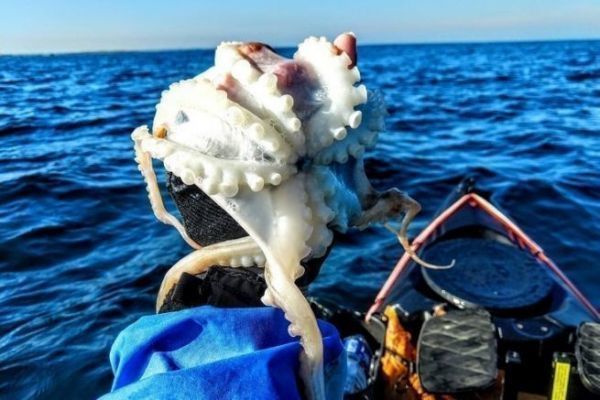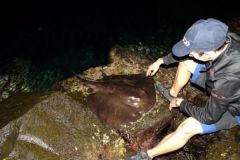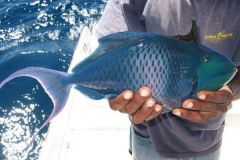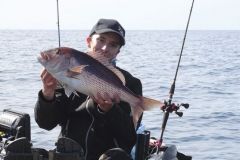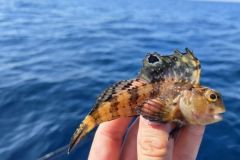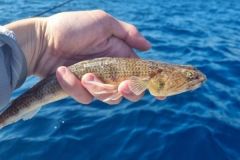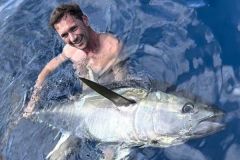After the article on the Mediterranean spotted octopus this one will introduce you to another discreet octopus that lives further north, the white octopus that, from time to time, comes up from the sea bed.
Presentation Eledone cirrhosa or white octopus
It is a small cephalopod measuring about fifty centimeters when adult. It is of yellow, orange, red color, more or less dark. On the other hand, it is of an immaculate white below. It has well on this capacity of mimicry of all its cousins with tentacles. The head is rather small, like the others, it has 8 tentacles.
Its great characteristic, which allows to recognize it quickly, is that it has only one row of suckers. In the males, there is an arm shorter than the others and the point carries the copulatory organ, the ectocotile.
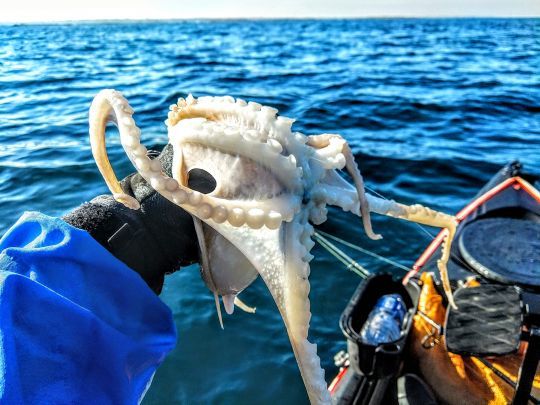
Habitat and food
Its habitat is located on bottoms up to 800 m, it does not disdain to go up on sandy-muddy bottoms in the depth of 10 to 100 m, it is there that one will be able to prick it. This species is found in the Northeast Atlantic, the Channel, the North Sea and the Mediterranean.
Like the others, it feeds on crabs and loves lobsters, whose shell it pierces with its beak. Shrimps, fish and other cephalopods will also be on the menu.
Reproduction
Its reproduction is spread out from March to August. Like the other octopuses, it is the female who has the custody of the eggs, she stops feeding until the hatching, ventilating them without stop and dies once her work finished.
The cousins
A close relative of Eledone cirrhosa lives in the Mediterranean, Eledone moschata, more commonly called, Eledone musquée or musky octopus. Of more modest size, this octopus gives off a very musky smell as soon as it is taken out of the water, hence its name. These species are often confused with the common octopus, Octopus vulgaris, but it has two rows of suction cups on its tentacles and reaches a more consistent size.
The fishing of the white octopus
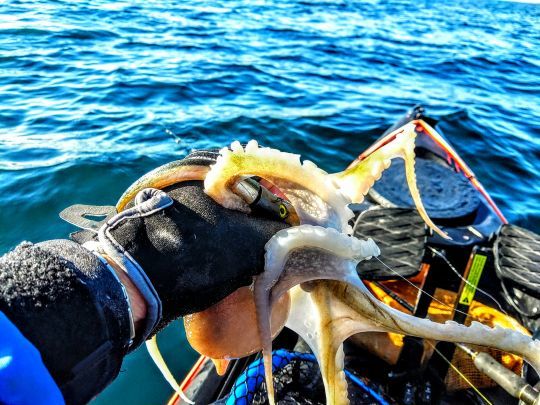
As a leisure activity, we cannot fish them specifically because of their way of life in great depths. It is quite by chance that we will fish one of these specimens, during its food strolls in funds more feasible for us.
Its fishing will be done with the same techniques as for the other cephalopods. The specimen in the picture was caught with a soft lure in 25 meters of depth, on the north coast of Brittany in mid-October.
The video of this unusual catch:

 /
/ 